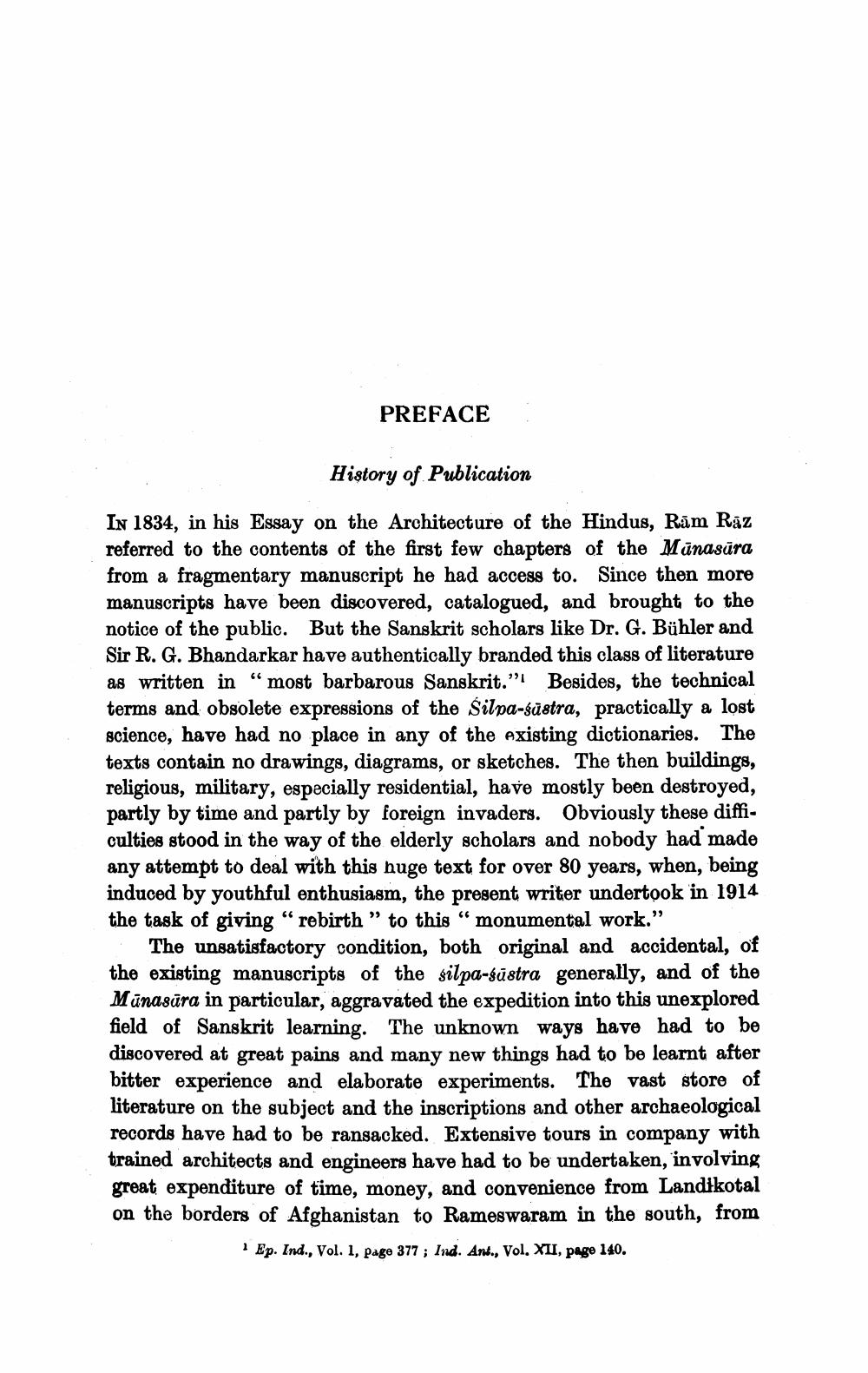________________
PREFACE
History of Publication
In 1834, in his Essay on the Architecture of the Hindus, Rām Raz referred to the contents of the first few chapters of the Mūnasüra from a fragmentary manuscript he had access to. Since then more manuscripts have been discovered, catalogued, and brought to the notice of the public. But the Sanskrit scholars like Dr. G. Bühler and Sir R. G. Bhandarkar have authentically branded this class of literature as written in “most barbarous Sanskrit."! Besides, the technical terms and obsolete expressions of the Silpa-gūstra, practically a lost science, have had no place in any of the existing dictionaries. The texts contain no drawings, diagrams, or sketches. The then buildings, religious, military, especially residential, have mostly been destroyed, partly by time and partly by foreign invaders. Obviously these difficulties stood in the way of the elderly scholars and nobody had made any attempt to deal with this huge text for over 80 years, when, being induced by youthful enthusiasm, the present writer undertook in 1914 the task of giving “rebirth” to this “ monumental work."
The unsatisfactory condition, both original and accidental, of the existing manuscripts of the silpa-sūstra generally, and of the Mūnasūra in particular, aggravated the expedition into this unexplored field of Sanskrit learning. The unknown ways have had to be discovered at great pains and many new things had to be learnt after bitter experience and elaborate experiments. The vast store of literature on the subject and the inscriptions and other archaeological records have had to be ransacked. Extensive tours in company with trained architects and engineers have had to be undertaken, involving great expenditure of time, money, and convenience from Landikotal on the borders of Afghanistan to Rameswaram in the south, from
1 Ep. Ind., Vol. 1, page 377 ; Ind. Ant., Vol. XII, page 140.




